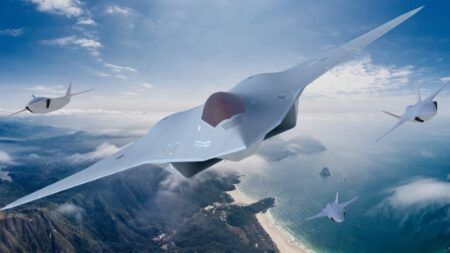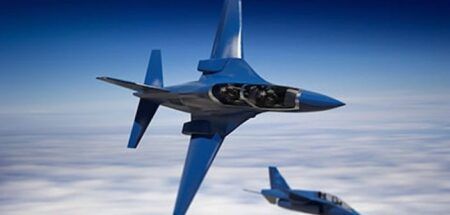The F-35 Joint Strike Fighter Integrated Test Force (ITF) is in the process of testing the F-35A’s newest munitions asset – the GAU-22/A. The gun is a four-barrel Gatling gun that fires 25mm rounds.
Unlike the Marine Corps and Navy variants, the GAU-22/A is integrated internally to the F-35A. In the other variants, the gun is mounted to the outside as a pod. A similar weapon, GAU-12, has been used on the AV-8B Harrier Jump Jet.
The first phase of testing started June 9, when the first shots were fired from tail number AF-2 on the ground at the Edwards Gun Harmonizing Range at Edwards Air Force base (AFB), California, USA.
The test team hopes to finish ground-testing sometime during August and start the airborne phase in late September. An operational gun capability will be added with a future block of software, which is in the inintial stages of testing at Edwards AFB. The tests are done using a target practice round, PGU-23/U, which fires from the gun, but does not explode on impact.
The tricky part of this test phase is that the gun will never operationally fire on the ground,” said Major Andrew Rollins, 461st Flight Test Squadron, assistant director of operations and test pilot on the project.
“To conduct the test, they have to use software to bypass interlocks and fool the aircraft to make it think it’s in the air. As an Air Force pilot, it’s going to be one more thing that I can select to either strafe air-to-ground targets or shoot as an air-to-air weapon.”
In legacy aircraft, the gun fires through a hole in the outer molding. However, to keep the F-35A hidden from radar signatures, the gun will be kept behind closed doors until the trigger is engaged.
Prior to testing the integration of the GAU-22/A into the F-35A, the gun itself was tested as a standalone. It was also flown during test points without firing to ensure that the flight envelope would not overstress the gun mounts. Preparing for the ground gunfire tests in the jet took roughly six months.
AF-2, a highly modified flight sciences aircraft, underwent four months of instrumentation modifications and had a line production gun installed for this project. Tiffany Krogstad, Lockheed Martin AF-2 flight test engineer, said that the AF-2 is normally a ‘scientist aircraft’ executing loads and buffet testing.
“(AF-2) is the only aircraft in the world that can get us this data,” said Rollins. “It’s been highly instrumented in order to get us the information we need to proceed to the next test point and ultimately to get the gun to its full envelope.”
As the test conductor, Krogstad and her team are monitoring the gun’s performance and ensuring all the systems work as designed. She is especially concerned with making sure the jet can withstand the loads of a firing gun and the gun operates as expected. Since AF-2 is a flight sciences aircraft, it does not have all the missionized systems of full-line production aircraft. The gun will be further tested with a line production jet sometime next year for full integration.
“When we hand [the gun] off to the next aircraft to test full integration with the full avionics and mission systems capabilities, we’ll rest easy knowing that we did what we could to make sure that their test won’t have those issues,” Krogstad said.
Rollins on the other hand is looking at it from a test pilot’s perspective, evaluating the gun’s effects on the aircraft’s handling qualities. “By the time we get airborne, we’re hoping that our extensive preparation during planning, ground tests and airborne tests will eliminate every variable except for those associated with flight since flying will be the most demanding phase of this testing,” said Rollins. “While we’ll be targeting very specific objectives, the pilot will also be observing more qualitative effects such as muzzle flash, human factors, and flying qualities.”
During the airborne tests, the team will watch for the potential effects of having the gun mounted internally, like vibrations, acoustics and airflow. “Like any of the testing Edwards AFB does, we are managing all of the risk involved with this test,” said Rollins.
“When we sign it off and go hand it to the warfighter, they can go out and pull the trigger throughout the entire gun envelope and know that the aircraft is going to function properly. It’s not going to flameout, it’s not going to overheat, it’s not going to over G. And it’s going to hit the target.”
August 7, 2015




